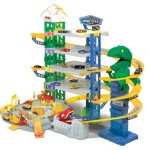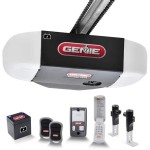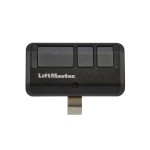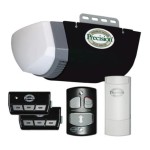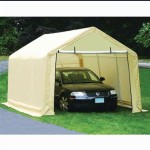Garage Door Bottom Seal: Rodent-Proofing Your Home
A garage door bottom seal is a crucial component in maintaining the integrity of a garage. Its primary function is to create a barrier against the elements, preventing water, debris, and pests from entering the garage. However, standard bottom seals often prove insufficient in deterring rodents, which can gnaw through the rubber or vinyl materials, creating entry points. This article explores the importance of a rodent-proof garage door bottom seal, the types available, the benefits they offer, and factors to consider when selecting and installing one.
Rodents, including mice and rats, are persistent and adaptable creatures. They seek shelter and food, and a garage often provides both. The presence of rodents in a garage can lead to several problems, including damage to stored items, contamination of food supplies (if any are kept in the garage), and the potential spread of diseases. Furthermore, rodents can gnaw on electrical wiring, creating a fire hazard. Effective rodent control requires a multi-faceted approach, and a rodent-proof garage door bottom seal is an important step in preventing entry.
Why Standard Garage Door Bottom Seals Fail Against Rodents
Standard garage door bottom seals are typically made from rubber or vinyl. These materials are flexible and can effectively seal gaps under the garage door, preventing drafts and water intrusion. However, they are not resistant to chewing. Rodents possess strong teeth and a natural instinct to gnaw. They will readily chew through these materials to gain access to the garage, especially if they detect food or shelter inside.
The design of standard seals also contributes to their vulnerability. Often, they are relatively thin and easily compromised. Moreover, the pressure exerted by the garage door against the seal can create weak points. Over time, the seal can become brittle and cracked, further facilitating rodent entry. Temperature fluctuations can also degrade the material, making it more susceptible to damage.
Therefore, while standard garage door bottom seals serve a purpose, they are not a reliable solution for rodent-proofing a garage. A more robust and rodent-resistant option is necessary to effectively deter these pests.
Types of Rodent-Proof Garage Door Bottom Seals
Several types of garage door bottom seals are specifically designed to resist rodent intrusion. These seals typically incorporate materials and designs that make them more difficult for rodents to chew through. These seals can be broadly categorized based on their construction and materials:
*Metal Reinforced Seals:
These seals feature a core or embedded layer of metal, such as steel or aluminum mesh. The metal provides a physical barrier that rodents cannot easily penetrate. The metal is usually encased in a durable rubber or vinyl that provides weather sealing while protecting the metal from corrosion. These seals are a popular choice due to their effectiveness and relative ease of installation. *Brush Seals:
Brush seals consist of dense rows of bristles that create a barrier against pests and debris. While the bristles themselves are not impervious to chewing, the sheer density of the brush makes it difficult for rodents to find a point of entry. Furthermore, the bristles conform to uneven surfaces, providing a better seal than traditional rubber or vinyl seals. Brush seals are particularly useful in situations where the garage floor is not perfectly level. *Solid Rubber or Vinyl Seals with Increased Density and Hardness:
Some manufacturers offer garage door bottom seals made from high-density rubber or vinyl compounds that are more resistant to chewing than standard seals. These seals are thicker and harder, making it more challenging for rodents to gnaw through them. While not completely rodent-proof, they offer a significant improvement over standard seals. The effectiveness of these seals depends on the specific material used and the rodent's persistence. *Combination Seals:
Some seals combine features from different types to maximize their effectiveness. For example, a seal might incorporate a metal strip at the bottom edge to deter chewing, combined with a brush section to seal gaps and uneven surfaces. These hybrid seals offer a comprehensive approach to rodent-proofing.The choice of seal depends on various factors, including the severity of the rodent problem, the condition of the garage door and floor, and the budget.
Benefits of Installing a Rodent-Proof Garage Door Bottom Seal
Installing a rodent-proof garage door bottom seal offers numerous benefits beyond simply preventing rodents from entering the garage. These benefits contribute to the overall health, safety, and security of the home.
*Effective Rodent Deterrent:
The primary benefit is, of course, the prevention of rodent entry. By creating a physical barrier that rodents cannot easily penetrate, these seals significantly reduce the risk of infestation and the associated problems. This helps protect stored items, food supplies, and the structural integrity of the garage. *Improved Weather Sealing:
Rodent-proof seals also provide excellent weather sealing, preventing drafts, water intrusion, and the accumulation of snow and ice. This can help reduce energy costs by minimizing heat loss in the winter and keeping the garage cooler in the summer. Proper weather sealing also protects the garage from moisture damage, which can lead to rust, mold, and rot. *Enhanced Security:
A secure garage door is essential for protecting the home from theft and vandalism. A rodent-proof seal that tightly seals the bottom of the door can make it more difficult for intruders to gain access to the garage. The added resistance and tighter seal can deter potential burglars. *Reduced Noise Pollution:
A well-sealed garage door can also help reduce noise pollution from outside. This is particularly beneficial for homes located near busy roads or in noisy neighborhoods. The tight seal dampens sound waves, creating a quieter and more peaceful environment inside the garage. *Protection from Debris:
The seal also prevents the entry of debris such as leaves, dirt, and dust. This helps keep the garage cleaner and reduces the need for frequent sweeping and cleaning. A clean garage is not only more aesthetically pleasing but also less attractive to rodents and other pests.The benefits of installing a rodent-proof garage door bottom seal extend beyond pest control, contributing to a more comfortable, secure, and energy-efficient home.
Factors to Consider When Selecting a Rodent-Proof Seal
Selecting the right rodent-proof garage door bottom seal requires careful consideration of several factors. The specific needs of the garage, the type of garage door, and the severity of the rodent problem should all be taken into account.
*Material:
The material of the seal is a crucial factor in determining its effectiveness against rodents. Metal-reinforced seals offer the best protection, while high-density rubber or vinyl seals provide a more affordable alternative. Brush seals are suitable for situations where a tight seal is needed on uneven surfaces. *Durability:
The seal should be durable enough to withstand the wear and tear of daily use. Consider the thickness and quality of the material, as well as its resistance to UV radiation and temperature fluctuations. A durable seal will last longer and provide more reliable protection. *Ease of Installation:
The ease of installation is another important consideration. Some seals are designed for easy DIY installation, while others may require professional assistance. Consider the skill level and available tools before making a purchase. Incorrect installation can compromise the effectiveness of the seal. *Compatibility:
Ensure that the seal is compatible with the type of garage door. Some seals are designed for specific types of doors, such as sectional or roll-up doors. Check the manufacturer's specifications to ensure a proper fit. *Cost:
The cost of the seal is an important factor for many homeowners. Metal-reinforced seals are typically more expensive than rubber or vinyl seals, but they offer better protection. Consider the budget and weigh the cost against the benefits of each type of seal. *Warranty:
Look for seals that come with a warranty. A warranty provides assurance that the manufacturer stands behind the product and will replace it if it fails prematurely. A longer warranty typically indicates a higher-quality product.By considering these factors, homeowners can choose a rodent-proof garage door bottom seal that meets their specific needs and provides effective protection against pests.
Installation and Maintenance of Rodent-Proof Seals
Proper installation and regular maintenance are essential for ensuring the long-term effectiveness of a rodent-proof garage door bottom seal. Incorrect installation can leave gaps that rodents can exploit, while neglecting maintenance can lead to premature wear and tear.
*Installation:
Follow the manufacturer's instructions carefully when installing the seal. Ensure that the seal is properly aligned and securely fastened to the garage door. Use the appropriate tools and hardware to avoid damaging the seal or the door. If unsure about the installation process, consider hiring a professional. *Regular Inspection:
Regularly inspect the seal for signs of damage, such as cracks, tears, or gaps. Pay particular attention to areas where rodents have been known to chew. Promptly repair or replace damaged sections to maintain the integrity of the seal. *Cleaning:
Clean the seal regularly to remove dirt, debris, and grime. Use a mild detergent and water to wash the seal, and then rinse it thoroughly. Avoid using harsh chemicals or abrasive cleaners, as these can damage the material. *Lubrication:
Lubricate the seal occasionally to keep it flexible and prevent it from drying out and cracking. Use a silicone-based lubricant specifically designed for rubber or vinyl seals. Avoid using petroleum-based lubricants, as these can degrade the material. *Addressing Other Entry Points:
Remember that a rodent-proof seal is only one component of a comprehensive rodent control strategy. Seal any other potential entry points in the garage, such as cracks in the walls or foundation, gaps around pipes, and openings around windows. Use caulk, expanding foam, or metal flashing to seal these gaps.By following these installation and maintenance tips, homeowners can maximize the lifespan and effectiveness of their rodent-proof garage door bottom seal, ensuring long-term protection against pests.

Xcluder 8 In X 1 Stainless Steel Door Strips Pack Of 4 Rodent Proof Garage Top And Side Seal 162942 The Home

Xcluder 8 In X 1 Stainless Steel Door Strips Pack Of 4 Rodent Proof Garage Top And Side Seal 162942 The Home

Rodent Block And Chew Proof Door Seal Repairs Commercial Doors

Xcluder X2 Metal Corrugated Roll Up Garage Door Bottom Seal Kit

Xcluder 8 In X 1 Stainless Steel Door Strips Pack Of 4 Rodent Proof Garage Top And Side Seal 162942 The Home

Weatherseal Bottom Pvc Rodent Block Black Per Ft

Garage Door Rodent Shield

Rodent Proof Door Seal 3 X 75 Exclusion Pestweb By Veseris

Have A Question About Action Industries Rodent Block Garage Door Bottom Seal Kit With 1 3 8 In Aluminum Retainer And Epdm Rubber For Single Car Pg The Home

Xcluder 36 Standard Rodent Proof Door Sweep Anodized Aluminum 2 Pk Walmart Com
See Also


